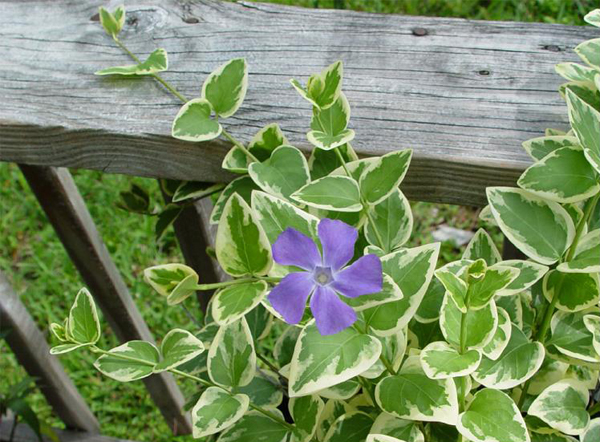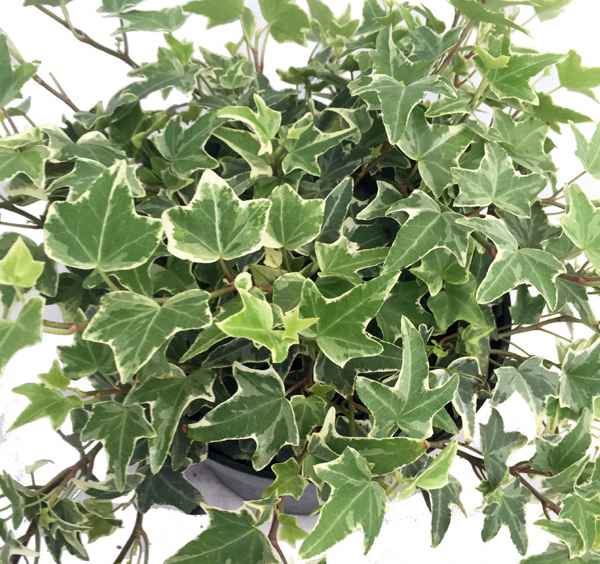
Minds work in mysterious ways. Here I am, inside my home, choosing to minimize my interactions with the world outside my four walls. I walk around the perimeter of my property for fresh air and notice the encroaching English ivy from two of my neighbors. I sure don’t want that lush, green vine taking over the land and climbing my trees and eventually eliminating leaves and killing them. It’s an invader looking for a host, and I need to protect my property from the attack. Oh, the parallels to our current health situation are ironic to me. I have the topic for this month’s column: Invasives and how to limit their proliferation is my timely topic.
Properly named, an invasive is a plant that is not native to where it is growing. It may be pretty. It may be a short-term solution to a problem. The plant is brought to the area from another place, often another continent, that has similar growing conditions. Unlike its home place, the newly arrived plant has no natural predators or problems. With the similar growing conditions of its home and no natural checkpoints to curtail its takeover, its population explodes, and it is in invasive stage.
Unfortunately, there are so many invasives to list and to caution people against purchasing and planting. The sharing of plants and insects in this global marketplace is not typically done without an effect in the newly occupied area. Insects are typically hitchhikers in the freight business. There is a history of imported insects decimating their new area. There must be a balance within an ecosystem or the new bug takes over. Same thing in the plant kingdom. Thankfully, their spread is usually slower than insect replication. Good ole manual removal does work with some plants. Let’s get more basic, though, and prevent the need for removal.
Why? Well, what value does the plant bring to the new area? What safeguards are in place to prevent the takeover? Can it get along with the existing plants or does it slowly replace them? How about the local wildlife? What value does this new plant bring to them, and does the value equal or exceed the benefits of the native plants? Does it change the soil, preventing natives from growing?
Did you realize that invasive plants can be in waterways as well as on land? Responsible boaters have practiced inspections looking for hitchhikers for decades. Invasives into the waterways change the habitats, affecting the fish and those who eat them. Yes, invasives can be deadly.
To borrow a phrase, the best defense is a solid offense.
Just don’t plant them. A plant from another area may pique your curiosity and be beautiful, exotic and intriguing, but at what cost? The decision is not all about you. Our actions and decisions affect our environment.
Choose a native plant when selecting new trees, bushes, ground covers, vines, etc. They support the ecosystem, including the birds, bees, squirrels and larger lifeforms. Gardeners do have the choice to help the wild things survive and to keep your piece of the earth in balance. That intent is stewardship, and the action should be to keep it local. Your hunter and fisherman friends will thank you. Work on removing any existing invasives. Expect it to be an ongoing, tedious process for awhile.
As you add to your landscape, be diligent and informed. Avoid invasives. Educated and caring nurseries will be able to provide you with alternates to the imported, marketed plants. Express what you are trying to do on the property and ask for native plants to accomplish it.

Invasive Plants:
Winter creeper (ground cover)
English ivy (berries are toxic to humans and animals)
Japanese honeysuckle (yellowish, often found in woodlands or fences)
Chinese wisteria vine
Bamboo (roots can be 20 inches deep)
Winged burning bush (tons of seeds per plant)
Nandina domestica (spreads through root; berries are toxic)
Privet (sold for hedges)
Autumn olive (tons of seeds per plant)
Russian olive (hard to eradicate due to very deep roots)
Bradford pear trees (out-compete the other trees)
Vinca, a.k.a. common periwinkle (a ground cover)
Japanese barberry (alters the pH of the soil)
Sweet autumn clematis
Weeping lovegrass
Japanese spirea
Goji berry (spreads root and berries. Berries are edible)
Jerusalem artichoke (tubers spread)
Comfrey (Used for mulching through chop and drop but spreads)
Mimosa
Kudzu
Cogongrass*
Giant reed*
Ice plant
Onion grass*
Pampas grass*
Tree of heaven
Red sesbania (buy a Redbud)
* Always assess if an ornamental grass adds any value as a foodstuff to the native animals
There Are More . . .
In addition to the UT resources, there is some great invasive information on You Tube. I want to thank the Epic Gardening and Plant Abundance channels for helping to create the above list.
Things to Do in the Garden During April
– Direct-sow spinach and other spring crops to avoid the heat of mid-May and later
– Finish site preparation
– Have soil tested and apply pre-plant fertilization for summer crops
– Lay irrigation tubing
– Mid-April is the beginning of green bean and sweet corn planting in Middle Tennessee
– Warm season transplants can go into the garden at the end of the month
– Record the last frost for your records (which could be in May)













